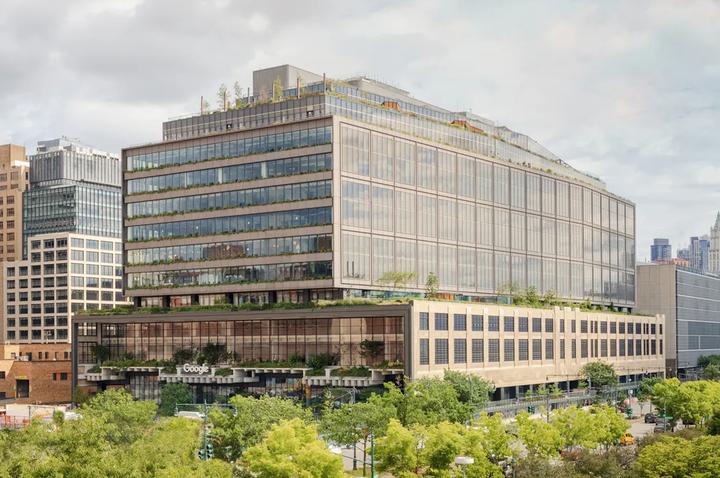Since 1934, St. John's Terminal train station has helped shape New York City as we know it today. Now located at the end of the High Line, then an operational elevated freight line, St. John's was a hub for large deliveries of building materials, a critical resource during one of the city's most important construction booms. It's been more than 60 years since the train station was decommissioned, but the building is getting a new lease of life as Google's New York headquarters.
Located just off the Hudson River in Hudson Square, the updated structure includes the original three-storey terminal with nine additional floors above. The new expansion of the company's New York headquarters is designed to house 3,000 Google employees, a major boost for the company's New York headquarters. Since 2018, Google has doubled its number of employees in New York, from 7000 to 14,000.
Local architecture firm COOKFOX was responsible for the core and structure of the new St. John's, while global firm Gensler designed the interior of the space. According to Gensler principal Carlos Martinez Florez, creating a modern environment for a dynamic workspace like Google requires non-traditional thinking.
"One of the big reasons why it's important to be in the office is because that's how you build and sustain culture," says Martínez Flórez. "You have to make sure that the office is no longer just an efficiency machine, which probably looks more like the 20th century model; you want the office to be a place that encourages people to connect."

Beyond designing for employee interactions, COOKFOX and Gensler had another important consideration in mind. Sustainability was at the heart of the project from the beginning. Google says it saved an estimated 78,400 metric tons of carbon dioxide simply by reusing an old building rather than creating a new structure. During construction, nearly 77% of waste was diverted from landfills. Now that the headquarters is complete, it features solar panels, a rainwater harvesting system and native vegetation around the perimeter and on the terraces. For Google employees who want to cycle to work, there are around 500 easily accessible bicycle parking spaces. To keep St. John's connected to the city, there is also a public plaza on its north side.
"The building was not designed as a fortress, that was important to Google," says Martínez Flórez. "Google didn't want it to look like this was for them, they wanted to show that this building is part of New York."
The project also honours New York City by maintaining the history of St. John's past life. Part of the exterior façade has been cut away, exposing the elevated tracks where loads would have entered the building. Inside the ground level, a ceiling installation creates illusions of what Martínez Flórez's team called "ghost trains", which are reflections of light that trick the eye into believing that a train has just passed. And on the floor of the building, an irregular crack marks the original Manhattan waterfront.




